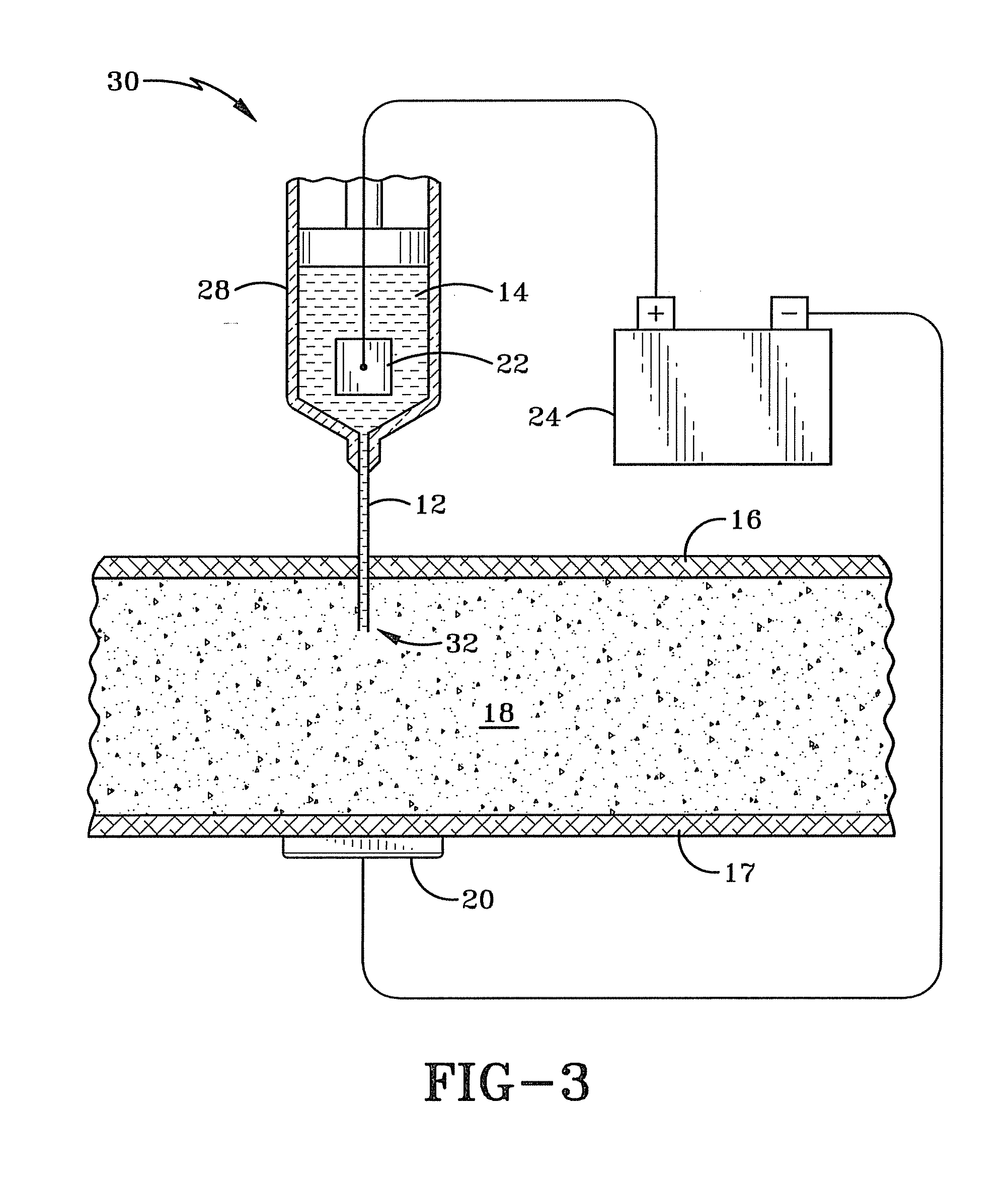Iontophoretic delivery system
- Summary
- Abstract
- Description
- Claims
- Application Information
AI Technical Summary
Problems solved by technology
Method used
Image
Examples
first embodiment
[0019]FIG. 3 illustrates a first embodiment that is the preferred embodiment of a system 30 for iontophoretically administering an iontophoretic medicine. The system 30 improves over the prior art systems discussed earlier by at least partially immersing a submersible electrode 22 into an ionized (e.g. iontophoretic) solution 14 with a medicine and injecting the medicine into body tissue 18 beneath the skin 16. This allows for precise initial placement of the medicine within the body as well as providing a way to control the dosage amount of the medicine entering the body. An ionic current is created between the submersible electrode 22 and another external electrode 20 placed on the surface of the skin 17 on the body. This current will cause the iontophoretic medicine to flow from the injection point 32 toward the external electrode 20. The concentration of the medicine may be increased or decreased by controlling the ionic current with the voltage applied by a power supply 24. The...
second embodiment
[0025]FIG. 4 illustrates a second embodiment that is a method 400 of administering an iontophoretic solution with a medicine. The method 400 applies a voltage across a body tissue and an iontophoretic solution including medicine, at 402. This voltage will cause the iontophoretic transportation of the iontophoretic solution with the medicine once the solution is injected into the body. At least some of the iontophoretic solution is injected, at 404, directly into the body tissue without requiring the iontophoretic transportation of the iontophoretic solution including medicine through the skin as in prior art systems that do not inject the iontophoretic solution into the skin. Typically, the injecting, at 404, is performed while the voltage is applied.
[0026]As mentioned earlier, the iontophoretic solution can be directly injected into the body tissue with a needle of a syringe. When the iontophoretic solution and medicine is directly injected into tissue below the keratin layer of th...
PUM
 Login to View More
Login to View More Abstract
Description
Claims
Application Information
 Login to View More
Login to View More - R&D
- Intellectual Property
- Life Sciences
- Materials
- Tech Scout
- Unparalleled Data Quality
- Higher Quality Content
- 60% Fewer Hallucinations
Browse by: Latest US Patents, China's latest patents, Technical Efficacy Thesaurus, Application Domain, Technology Topic, Popular Technical Reports.
© 2025 PatSnap. All rights reserved.Legal|Privacy policy|Modern Slavery Act Transparency Statement|Sitemap|About US| Contact US: help@patsnap.com



